All about the Manaslu climbing expedition, autumn 2020, 2021
All about the Manaslu climbing expedition, autumn 2020, 2021
Dear friends! Autumn is approaching, and with it the autumn expeditions. This post is for those who do not think of their life without Mountains and want to climb 8000+ even in such a difficult time. I would like to draw Your attention to the fact that there are already 4 people in this group, and they are waiting for the moment when they can go to meet their Dream. I also want to draw Your attention to the fact that this year the expedition will be led and responsible for the lives of the participants by our charming, responsive and sensitive, as well as brave and experienced Max Shibalov. Max climed thousands of Peaks as a guide, including Manaslu.
And so, my story, how everything will be organized in our expedition to Manaslu.
Today my story is about the expedition to Manaslu 8163, about our services and what our participants pay 11500$ for full service and 24000$ for VIP service. I would like to draw Your attention to the fact that the price of climbing to Manaslu, the services provided and their quality strictly correspond to this description.
Short information
Mount Manaslu 8163 (Manaslu) is located in the North of Nepal and is one of the highest peaks in the world — the Himalayan eight-thousandth. The name of the mountain comes from the Sanskrit "Manas" — mind or soul. One of the common translations of the name Manaslu is "mountain of spirits". Another name is also known — Kutang.
There are three peaks of mount Manaslu: the North — 6994 meters; the East-7992 meters; the main Summit of Manaslu-8156 meters. The world's eighth-highest eight-thousand-meter mountain, like its other Himalayan counterparts, can tell a fascinating story of its conquest.
Mount Manaslu is one of the highest mountains on our planet. The first attempt to climb to its peak was made in 1950. The British team's expedition was led by Harold Tilghman. First, experienced travelers conducted a reconnaissance, which allowed them to build the best route for climbing, which ran along the Northern face of Manaslu. Thanks to the work of Tilman's team, the developed route is still used to this day. However, the first time Manaslu failed to conquer.
After 2 years, the expedition to mount Manaslu is organized by the Japanese. They choose a new route along the Western face. It assumed a transition to the Eastern peak and then — to the northeast. As a result, the mark of 5,500 meters was successfully reached, but the Japanese could not advance further due to difficult rock sections.
Among mountaineers, the mountain is often referred to as Japanese. The fact is that since 1952, Japanese climbers annually stormed mount Manaslu and only for the fifth time were able to reach the top of 8,156 m. The first ascent took place in 1956, and the next ascent to the top of Manaslu took place only in 1971, and it was also made by the Japanese.
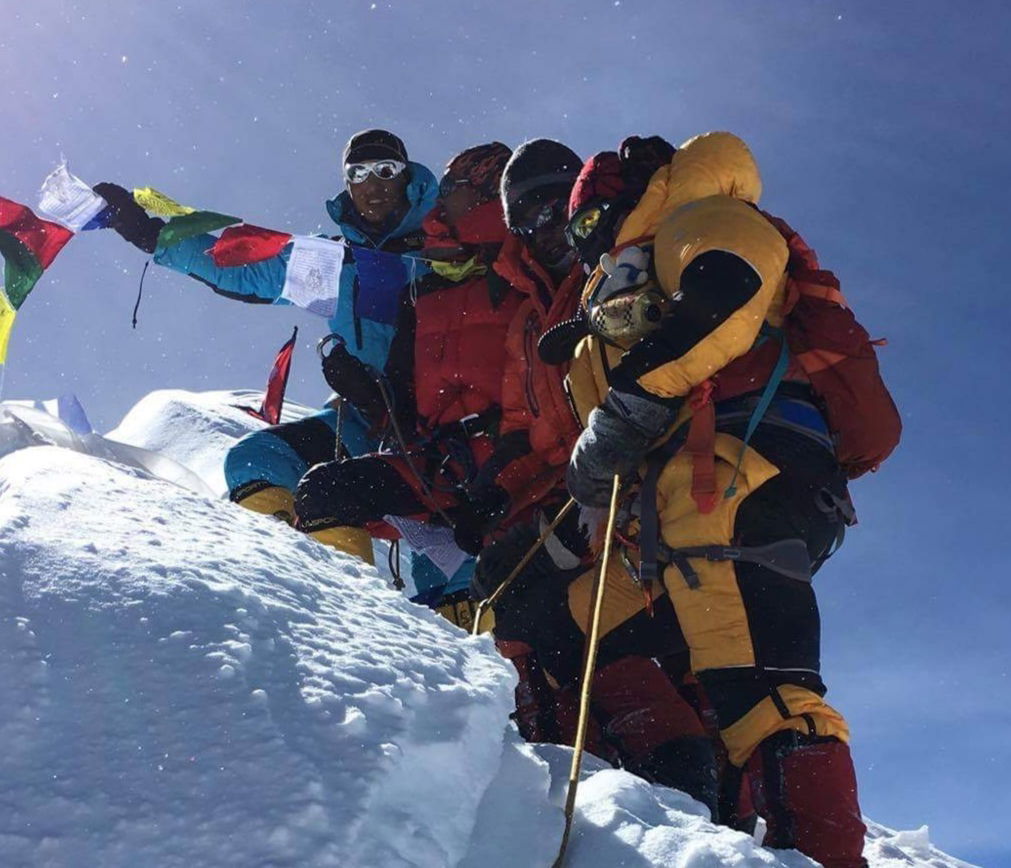
In 1953, the Japanese again attempt to climb mount Manaslu, taking a route that passes through the North-Eastern wall. It was possible to reach 7,750 meters. A year later, another Japanese expedition with 14 participants went to conquer the mountain. They took the same route, but encountered an unexpected obstacle. They were prevented by the inhabitants of one of the villages, who organized a column that did not allow the Japanese to advance further. The reason was the lack of permission to climb the previous team, which climbed a year ago. Permission had to be asked from the elders — this was not a document, but a kind of blessing. Due to the fact that after the Japanese left in 1953, a huge avalanche descended on Manaslu, the villagers believed that the gods were angry because of the outsiders. The avalanche claimed the lives of 18 people, which caused a strong local outrage. The Japanese had to literally run away, because the people were extremely hostile. I had to make a large donation to the community. This money was used to restore the monastery, which was destroyed in an avalanche. However, this did not help improve relations with the indigenous population. In the following years, they were still actively hindering the ascent of the Japanese, so the next expedition from Japan, which was able to at least advance without hindrance, took place only by 1971. By the way, the 1956 expedition, which also consisted of Japanese, was able to negotiate with the locals, although it was not easy. But they only reached the 5,600-meter mark. Nevertheless, we can already draw a conclusion about the huge zeal of the Japanese: they are the best explored Mount Manaslu, making a total of 7 expeditions.
In 1984, poles Ryszard Gajewski and Maciej Berbek made the first winter ascent. In 2014, another Polish mountaineer, Andrzej Bargel, set a record for conquering mount Manaslu, climbing to the top and descending from it on skis in less than a day.
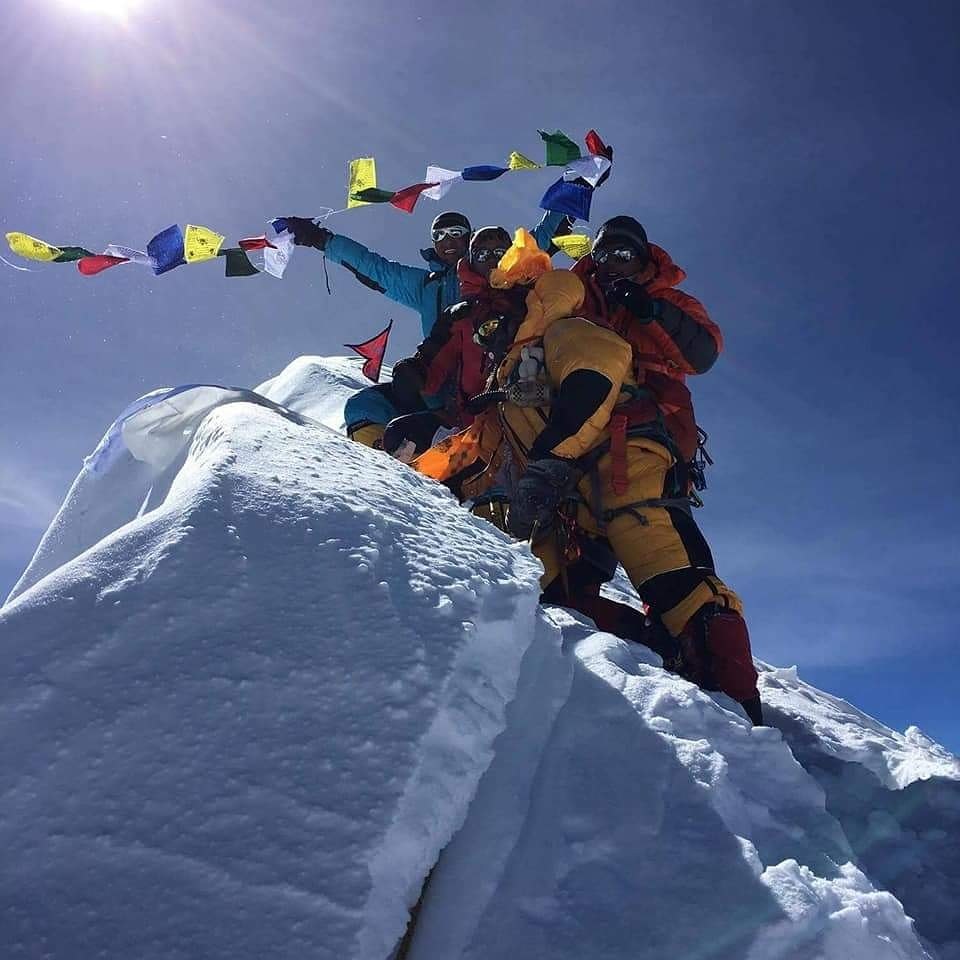
Now back to our expedition to the top of Manaslu 8163
The first is why you should come with us. Here everything is very simple. You will work with Pasang Lama and Phurba Sherpa as the main guides and I and Dorchi Sherpa as the organizers. Dorchi and I usually go to the Top, too. We have our experience on our team-21 ascents to the top of Manaslu. Let me explain-Dorchi Sherpa (organizer) - 7 Ascents, Oksana Morneva ( organizer) - 4 ascents, the owner of the absolute women's world record for the number of ascents To mount Manaslu, Pasang Dorji Sherpa( assistant organizer) - 3 ascents, Pasang Lama - 7 ascents.
Since our nearest season is autumn, here we will need the experience and knowledge of this Mountain in autumn. You may conclude that you will not find a team that knows this Mountain as well as we do. And also, our mountaineering is still commercial, so we try to minimize stressful and uncomfortable situations on the Mountain for our participants. We hold the lives of our participants in our hands, and we are very much aware of our responsibility.
How does it run our tour - Ascent to Manaslu take place
Our not virtual introduction starts at the international airport Tribhuwan. We personally-I, Dorchi or Pasang Lama meet You at the airport with the logo of our company. The transfer can be individual or group, if you suddenly arrive at the same time with one of the participants. It takes about 20-30 minutes to get from the airport to the tourist center of Tamel, where our hotel is located. Our groups stay in a comfortable hotel decorated in the local national style. The rooms are equipped with hot and cold water, air conditioning, and water glasses. Participants of the "Full Service" program have accommodation for 2 people in a room. VIP program participants have accommodation in VIP rooms, single accommodation. The package Price includes 4 nights in a hotel.

The next day, very early in the morning, We go to the Seto Gompa monastery for Puja. This is one of the largest monasteries in Kathmandu with ancient traditions. Puja is a worship service for successful ascent to the Top. According to local traditions, no expedition begins without this rite and the blessing of the Supreme monk. After the Puja, we return to the hotel. Participants have free time - you can buy what you may need in the Mountains.
The next day we have an early check-out. We are travelling by private bus to the town of Besisahar.
The trip will take us about 7 hours. In Besisahar stop for the night. Here we spend the night in a hotel with amenities, hot water and a bathroom will be in the room.
In Besisahar is the first checkpost which to mark their permits. Many people start their route from here
Besisakhar is a locality in the Central part of Nepal, located in the valley of the Marsyandi river at the foothills of mount Annapurna and Manaslu Himal.
Besisahar is the administrative center of the district Lamjung. According to 2001 data, the population of Besisakhar and the surrounding area was 5,427 people living in 1,137 private homes.
The organizers buy fresh vegetables for the expedition, and the participants can take a guided tour of the surrounding area.
The next morning, we went on a private jeep to the village Dharapani. The road is often broken by landslides, so the drive to Besisahar - Dharapani may be delayed until night.
In Dharapani spend the night in the guest houses, the level of which leaves much to be desired.
The next morning begin your walking caravan route to Base Camp expedition to Manaslu. From the village of Darapani, we expect a 5-day caravan journey through the Larke La 5100 pass to the village of Samagaon. Day of distance Bhimthang – Larke La - Dharamshala will be especially long. On this day, we will have to leave very early, about 5 am, in order to cross the pass in time and get to the camp. This area of the Himalayas is very little visited. Only expeditions to Manaslu and a few trekking groups come here. Therefore, the hotels here are as simple as possible. But we still try to choose only clean and maximum comfortable guest houses.
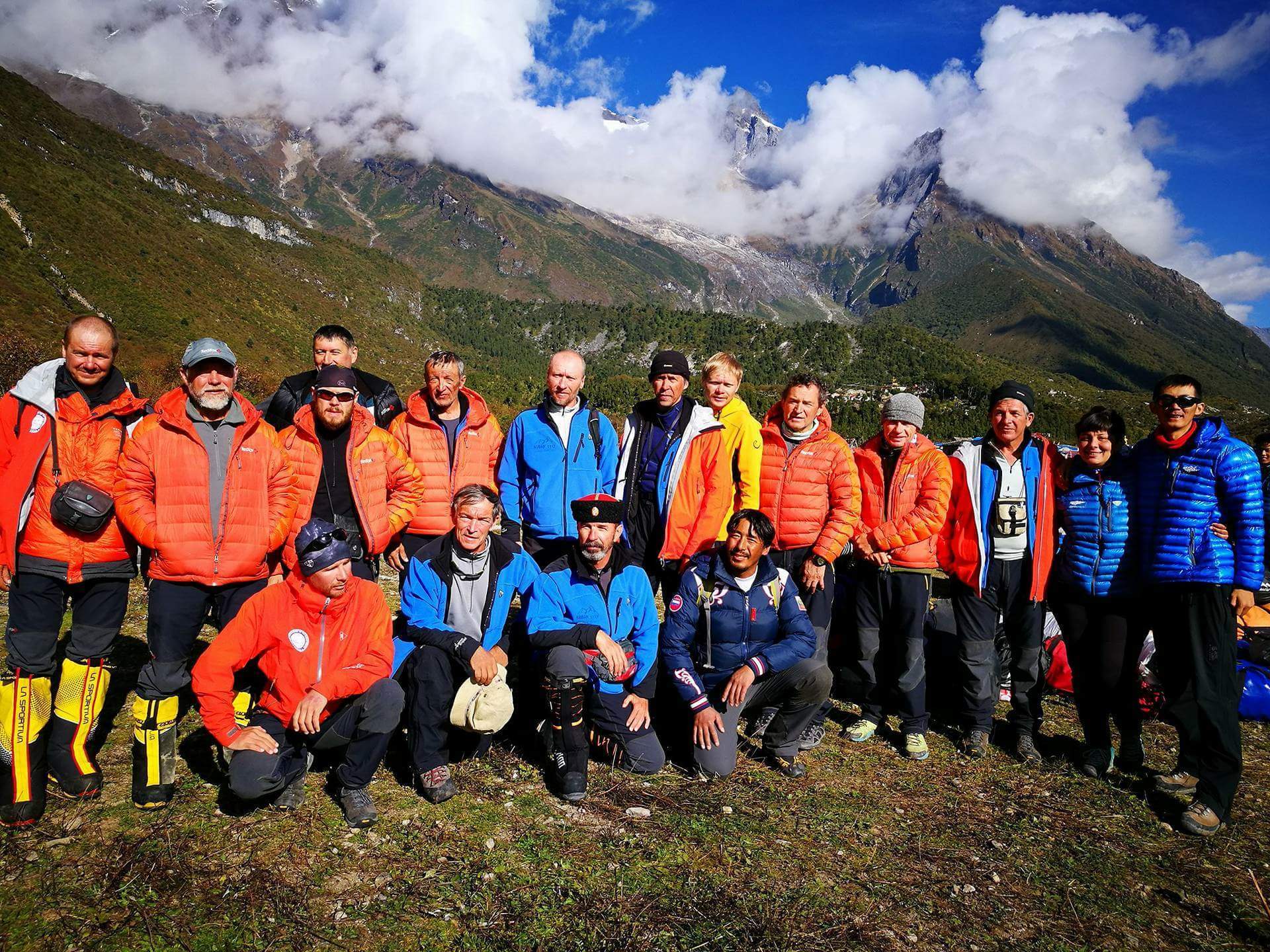
And now, on the fifth day of the caravan route, we come to the village of Samagaon.
The village is very famous for tourists and mountaineers, because it is located on the road to Manaslu and has an expanded system of tourist hotels, restaurants, shops, where tourists can relax and prepare for a hike. The village has electricity, and there is an airport (helicopter station) nearby, but it is used in most cases by climbers
Samagaon is also home to official institutions, police control, a post office, and a Bank. The Nepalese army barracks are located at the exit of the village.
Samagaon is the main point for traveling through the Larke La pass and for climbing Manaslu
On Saturdays, the Bazaar opens in the morning, which attracts residents of the surrounding villages, as well as Tibetans who come with goods through the passes from Tibet with Chinese goods
A Tibetan monastery is located in the vicinity of Samagaon.
On the first day in the village, we will perform a Puja service for a successful ascent and arrange Laundry. On the second day, a full rest before climbing to the Base Camp. We spend the second night in the same way, in Samagaon.
The next day we go further, in the direction of the Base Camp
And so, we are only about seven hours away from the Base Camp. The path climbs steeply up and zigzags over the sheep's foreheads. Then we cross a fairly rapid stream and find ourselves on a moraine. We follow the moraine ridge that leads directly to the Base Camp under the Manaslu Mountain. Our Base camp, owned by Makalu Extreme company, is the highest And it is located right under the railing leading to the Mountain. Its height is 4900. Thanks to the high location , we always have an abundance of clean water for drinking, cooking and showering.
Upon arrival at the Base Camp, we are already waiting for a wonderful lunch and a warm dining tent. Our dining tent is heated by a gas heater, so it is much warmer than outside.

What do our participants carry in their backpack during the day?
Our participants carry a bottle of water or a thermos of tea, sunscreen, spare gloves, Windproof jacket, down jacket. All other things are transported by yaks in our caravan. The baggage allowance that a participant can give to the caravan is 30 kg per person for full service participants and 60 kg of cargo for VIP service participants.
I want to draw Your attention to the fact that on the way to the base camp of Manaslu, all our food will be prepared by our expedition cook, who constantly works for the company Makalu Extreme Treks Expedition. We eat Breakfast in the morning. Fried sausages are usually served for Breakfast,
fried or boiled eggs, sliced cheese, porridge or rice pudding. Drinks include green tea, black tea, herbal tea, or coffee.
For lunch-soup or borsch, buckwheat porridge, macaroni, potatoes, wheat porridge, fried chicken, chicken with mushrooms, cutlets, steak, fish, pasta, pizza, salads from fresh vegetables, vegetable stew and ajap sandal. Drinks include black, green or herbal tea, hot chocolate, cereal hot drinks, cookies, chocolate, coffee
On days when we have to go a long day, the cook gives participants and guides a pack lunch. There you can usually see a fried pie, boiled eggs, cheese and sausage-sliced.
For dinner, there is about the same set of dishes as for lunch. Also on birthdays, days of reaching the Summit and national holidays, our chef will make us a cake with cream.
Meals and accommodation throughout the route are included in the tour price.
Alcohol is not included in the price, so if you plan to use it, then you need to take additional funds.
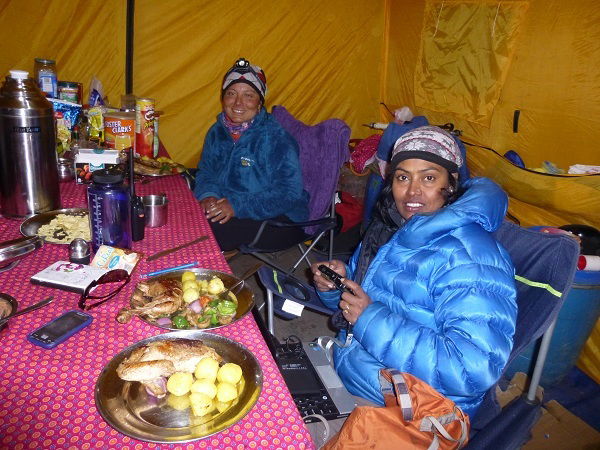
Base Camp will be our home for the next month. Now I will tell You about how life is arranged in our Base Camp, which is located under the mountain Manaslu. Social life is concentrated in the dining tent, which is also the mess hall. This is a very spacious tent, the floor of which is covered with carpet. It is also equipped with a gas heater. Therefore, it is always warm. Even in the coldest weather. Usually this is where all the parties, drinking hot tea, talking, playing cards or checkers, watching movies on the laptop.
To stay in the Base Camp, each participant receives an individual tent V-25. If the participants arrived as a couple, they can check in together. We have special tents for VIP service participants to stay in. These are large, stationary tents where you can stand at full height, measuring 2.5 x 3M. The tent has an entrance hall, and the floor is covered with carpet. All tents without exception are equipped with sleeping mattresses.
Also in the Base Camp there is a tent, which is called a storage house. You can put all the extra stuff in there.
Our shower room consists of two rooms. In the first room, you can change your clothes, leave dry things and towels. The second room is a shower room.
In the morning, there is always hot water in the washbasin for washing. Meals at the Base Camp are 3 times a day - Breakfast, lunch and dinner. Just always in the dining room on the table are thermos flasks with hot water, tea, coffee, chocolate, cookies. Participants can come there for tea at any time.
Upon arrival at the Base Camp, we will stay here for 4 days. During these days, we will make acclimatization exits and return to the Base Camp for the night. We will go up to the middle of the icefall 2 times. On one of these days, a Puja will be held. Puja is a service for successful ascent. At the same time, the camp is consecrated. No expedition is sent up until this rite is performed. Puja takes about 3 hours. During the monk's prayer, the guides stretch a network of prayer flags over the Base Camp. According to ancient tradition, flags should calm the elements, and thus ensure a safe ascent and descent for climbers.
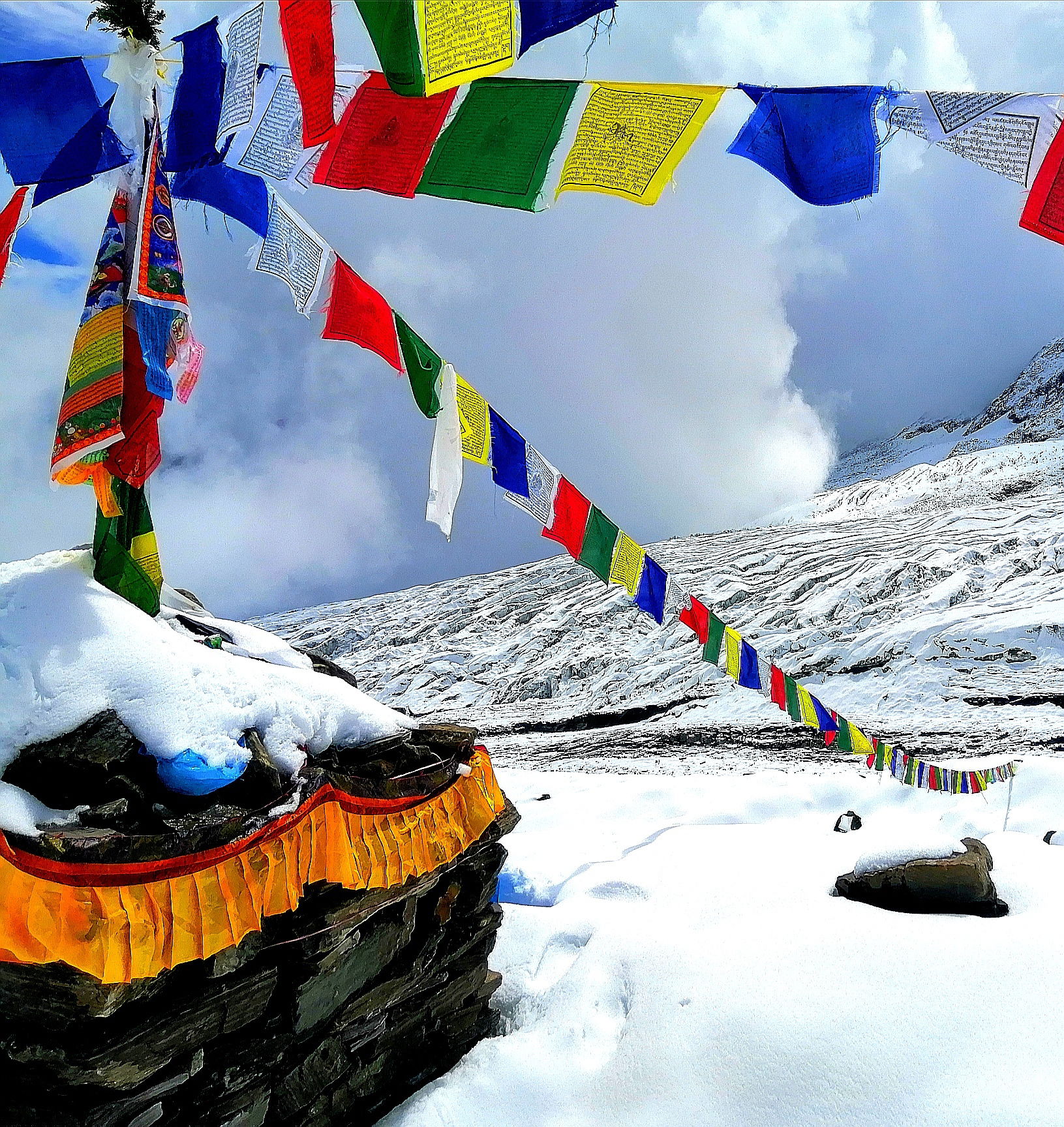
On the fifth day of our stay at the Base Camp, the first acclimatization trip will be planned.
Now I want to tell you what our participants carry in their backpacks during high-altitude rotation and during the summit push. Most things, tents, food, high-altitude gas, oxygen, sleeping bags, all this is entered by high-altitude guides. They also set up high-altitude camps. Participants carry their personal belongings, sun cream, thermos of water, a puffer jacket, and a windbreaker. A personal guide will be attached to each participant for high-altitude rotations. Participants of the VIP service will have two personal guides, and therefore they do not carry anything in their backpack at all. Guides take care of the safe passage of the route, prepare food for participants in high-altitude camps, and help on runs at high altitudes. VIP service participants do not need to fasten themselves at all - guides will do everything for them.
During this rotation, we will have to go up to Camp 1, and then, the next day, cross the icefall and go up to Camp 2. The next day we will go up about 300-400 meters in height in the direction of Camp 3 and go down to spend the night in Camp 1. The next day we go down to the Base Camp. Walking on an icefall is a very exhausting story. Therefore, we will need at least three days to recover from the high-altitude exit. And then we are again waiting for the acclimatization rotation. Again, we go up to Camp 1, the next day we cross the icefall and go up to Camp 2, the next day to Camp 3. We spend the night in camp 3. In the morning we go down to Camp 2, the next morning to the Base Camp. Now we need to recuperate, and we are ready for the Summit Push. Now we will choose the appropriate weather window. The Base Camp has an Internet connection from the provider Everest Link, so we are constantly able to receive updates of the weather forecast.
Oxygen is another separate topic in the high-altitude expedition. According to our experience, we have included in the package the minimum number of cylinders required for safe ascent.
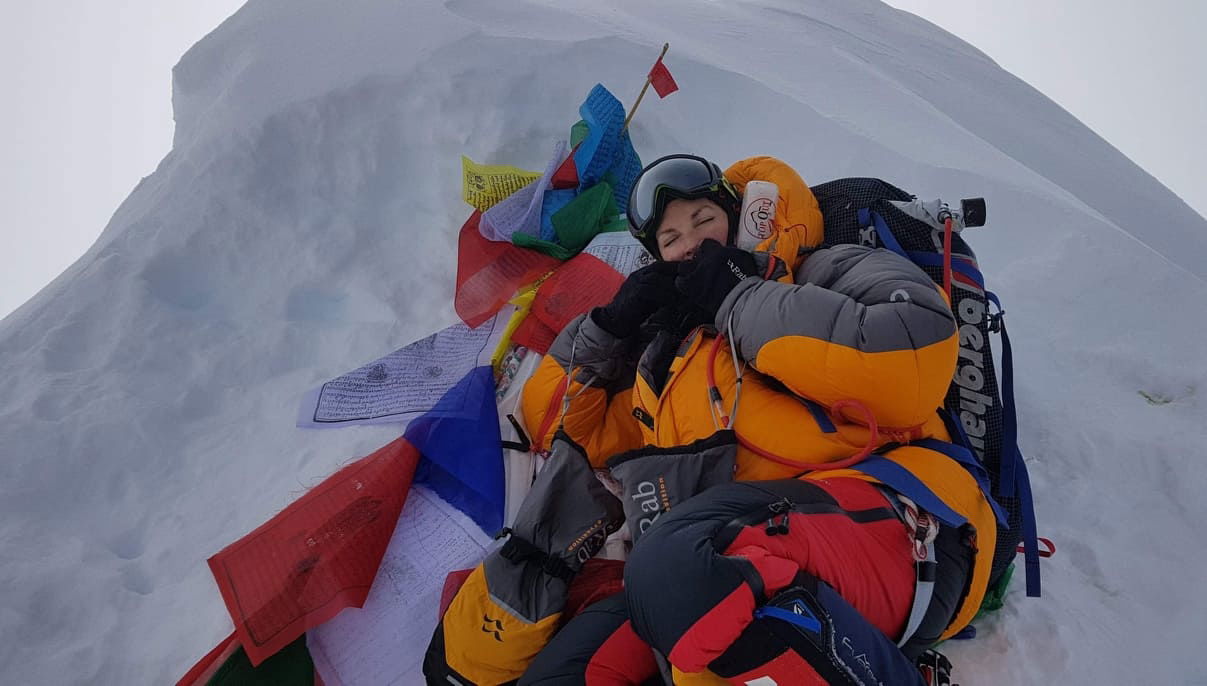
For a safe ascent, you need 2 oxygen cylinders. This is exactly the amount we have included in our commercial climbing package. The company will also give You a set of oxygen equipment for use. I want to remind you once again that 2 cylinders is the minimum amount of oxygen for a successful ascent. If you want to make your ascent, more comfortable and safe, you can buy oxygen at your own expense. The cost of 1 cylinder of oxygen is 500 dollars. I would like to draw Your attention to the fact that the readings on the filling of the balloon in Kathmandu and at an altitude of 7000 and 8000m on the pressure gauge will differ greatly due to the huge difference in atmospheric pressure. If you plan to use 4 cylinders, you can wear an oxygen mask no earlier than Camp 3 at an altitude of 7000 meters and you can only sleep when you feed 0.5. If you use more oxygen than you are supposed to, you will definitely not have enough oxygen to get to the Top and back. Therefore, in the oxygen issue, it is very important to assess your strength very soberly. We included 8 oxygen cylinders in the VIP package. Thus, VIP participants can use oxygen in the most comfortable mode. They can put on an oxygen mask already at the foot of the icefall and use oxygen on feed 1 during sleep. Also, during the assault, VIP participants will have enough oxygen to maintain a good climbing speed, which makes the Manaslu Summit Push as safe as possible.
We leave for the Manaslu Summit Push in the nearest weather window after acclimatization exits. Each of our participants has a personal guide, and VIP service participants have as many as 2 personal guides. Therefore, each group of participants-guides will move in a convenient rhythm and mode for the participant. It is not necessary to wait for each other, especially since the participants of the full service and VIP service are initially in unequal physiological conditions in terms of the number of guides and oxygen.
When participants rest between high-altitude rotations, their guides continue to work. They build and equip a network of high-rise camps. Thus, when we go to the Manaslu Summit Push, the entire infrastructure of high-altittude camps is already ready. According to the laws of the community on the Mountain, only the company that owns them has the right to use this site and tents on it in any circumstances. This is very true, since the construction of Camp 4 is really a very difficult and financially costly operation. The work of a qualified guide at these heights is very expensive and all these payments fall on the shoulders of the organizer.

And so, we went on the Summit Push. Each bundle of the guide-participant moves at its own pace. Start from Camp 1 usually no later than 2 nights, as it is desirable to pass the collapse of a dangerous icefall at night. Further, the other outputs may be later. I also want to pay attention to the section Camp3-Camp 4. This is a very steep traverse consisting of hard blue ice.
We leave Camp 4 for the Summit push no later than 10 PM. During the assault, the participants only have a thermos with hot tea in their backpack and one oxygen cylinder, from which the participant directly breathes. This day will be a hard day, especially for those who have the first eight-thousandth. Climbing Manaslu is a very serious task for those who are still at the very beginning of the ascent of the eight-thousand-meter mountains. Leaving Camp 4, we cross a huge snow plateau. There is usually a lot of fresh snow here. It was on this plateau in 2017 that The Makalu Extreme Treks Expedition rope fixing team opened a path to the Top in waist-deep snow for about 12 hours, while all the other inhabitants of the base camp sat in tents. It wasn't easy at all. And you should always be mentally and physically ready for this possibility. The probability of heavy snowfall on mount Manaslu is very high!
But now the plateau ends, and we climb out on a steep slope into a mini circus. From here, from this circus, a very narrow summit ridge begins. Carefully climb it for about 300 meters and go straight to the Top! For many, this is the first eight-thousandth! The emotions of this moment are simply impossible to convey! On the way up, we can see the most incredible views in the Himalayas. Summit of Manaslu is the place where a Dream comes True, and, for many, the first eight-thousand-meter mountain, the gateway to high-altitude mountaineering!
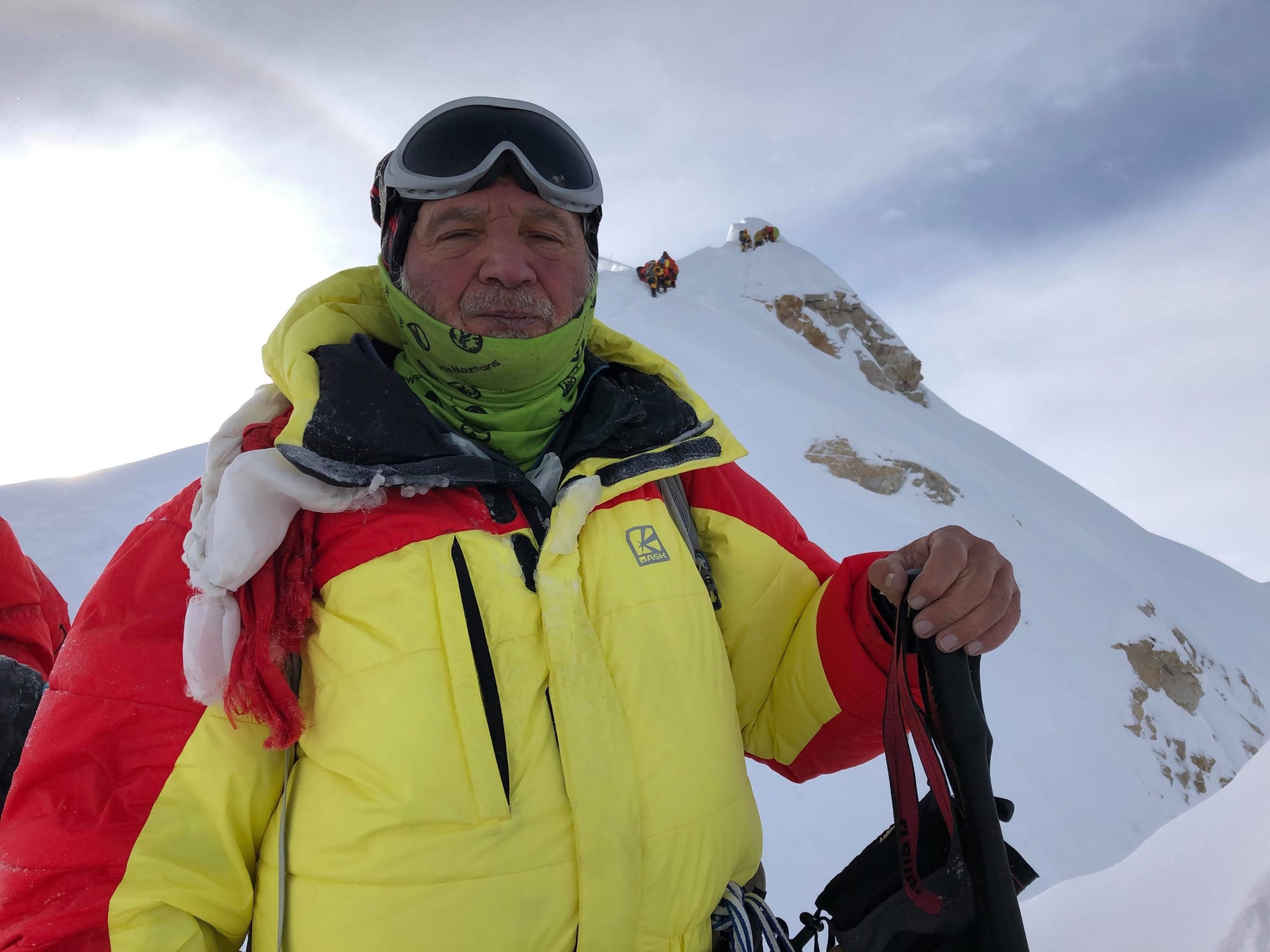
From the Top we go down to Camp 3 or 2, which everyone chooses according to the state and amount of oxygen.
The next day-descent to the Base Camp. At the Base Camp, we will have a festive dinner, cake, and a hot shower. The next day we rest and pack cargo. And finally, the next day we leave the Base and go down. The descent takes place on the way up. We go down to Samagaon and spend the night there. In good weather conditions, we fly by helicopter from Samagaon to Arugat. If the weather is not flying, we are waiting for the weather in Samagaon.
Overnight at the hotel in Arugat. Finally all the amenities in the room and a good bed!
This is a city in the tropics. The next morning we take a private bus to Kathmandu.
In Kathmandu, participants have another free day to buy Souvenirs, banquets and excursions.
The next morning, we escort the participants to the airport. We, the organizers, hope to see our participants in our next expeditions, because there are 14 eight-thousand-year-olds on Earth!


